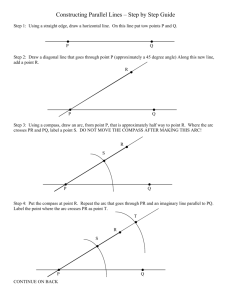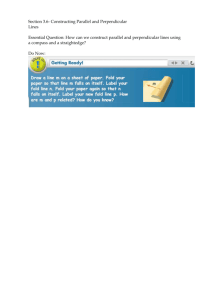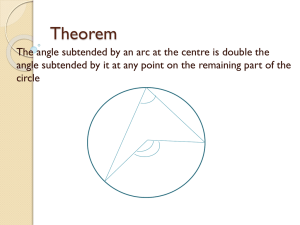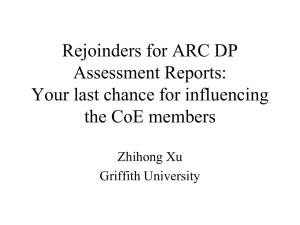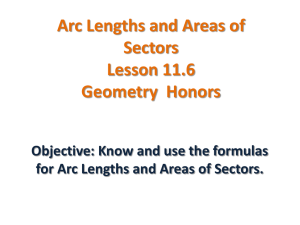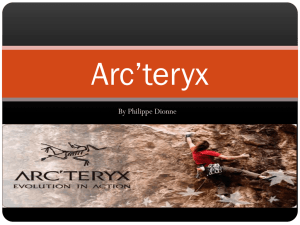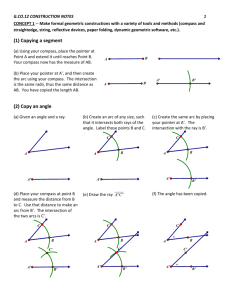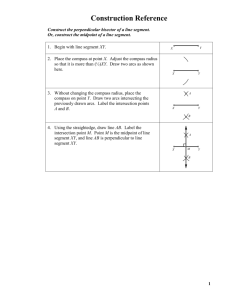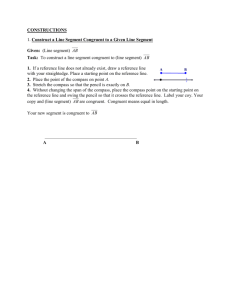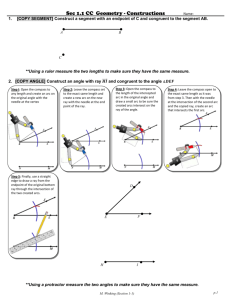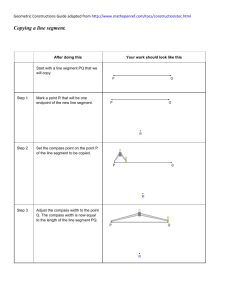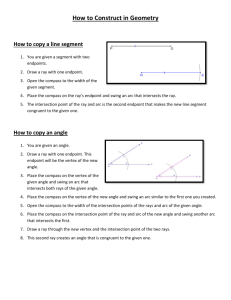transformation construction guide
advertisement
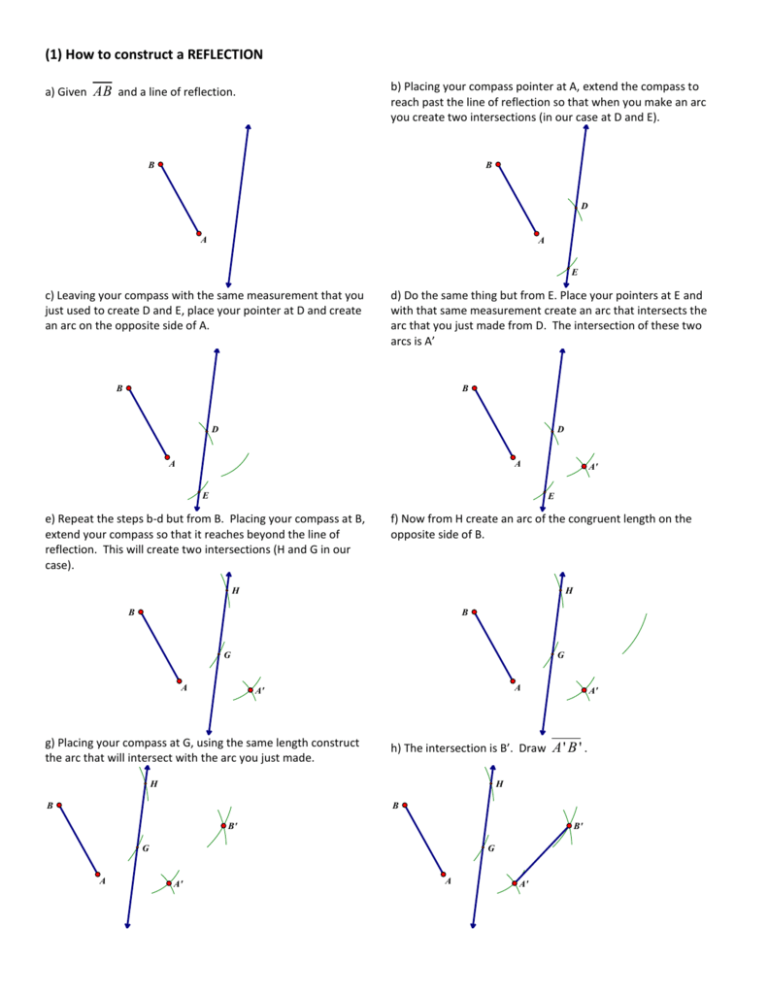
(1) How to construct a REFLECTION b) Placing your compass pointer at A, extend the compass to reach past the line of reflection so that when you make an arc you create two intersections (in our case at D and E). a) Given AB and a line of reflection. B B D A A E c) Leaving your compass with the same measurement that you just used to create D and E, place your pointer at D and create an arc on the opposite side of A. d) Do the same thing but from E. Place your pointers at E and with that same measurement create an arc that intersects the arc that you just made from D. The intersection of these two arcs is A’ B B D D A A E A' E e) Repeat the steps b-d but from B. Placing your compass at B, extend your compass so that it reaches beyond the line of reflection. This will create two intersections (H and G in our case). f) Now from H create an arc of the congruent length on the opposite side of B. H H B B G A G A A' g) Placing your compass at G, using the same length construct the arc that will intersect with the arc you just made. A' h) The intersection is B’. Draw A ' B ' . H H B B B' B' G A G A' A A' (2) How to construct a ROTATION b) Placing the pointer of your compass on O, create the arcs through B and through A in a positive direction (counter-clockwise). We know that A and B will move on these arcs during the rotation. a) Rotate AB about point O, 100°. A A B B O O c) Create OB , this will act as one side of the 100° angle that we are going to create. d) Place your protractor along OB , with the center of the protractor at O. Measure 100° from OB . Create a reference mark for 100°. A A B B O O e) Create the ray through the mark that you created. Where that ray intersects the arc that B is on, is B’ f) Create OA , then position your protractor to measure 100. Make a mark at 100. A A B' B' B O 100° B O g) Create the ray through the mark that you created. Where the ray intersects the arc that A is on, is A’. h) Draw in A ' B ' A A' B' A A' B' B O B O (3) How to construct a TRANSLATION a) Given a ABC and vector AA ' . b) In a translation all points move by vector AA ' (the same direction and the same distance) so we use our compass to measure the distance AA’. Use that measurement to make an arc from B and from C. We know that B and C must move that far in that general direction. B B C C A A A' A' c) Next we want to find the exact location of B’ on the arc that we just created. To do this we measure AB using our compass and then from A’ we create that arc until it intersect with the arc drawn from B. The intersection of these two arcs forms B’. d) We do the same to find C’ but we measure AC using our compass and then create the arc from A’ until it intersects the arc we made from C. This intersection is C’ B B C C B' B' A A A' A' e) Connect A’B’, B’C’ and C’A’ to complete the triangle. B C B' A C' A' C' (4) How to construct the Line of Reflection Connect any vertex of ΔDEF to its image (E to E'). Construct the perpendicular bisector of the segment formed. It is sufficient to choose only one set of corresponding points to get the line of reflection. You need not bisect all three connected segments, unless you want to test the accuracy of your construction. (5) How to construct the Point of Rotation Connect any vertex of the preimage to its image. Construct the perpendicular bisector of the segment formed. Repeat this for another vertex of the preimage and image. The point of intersection is the point of rotation.
